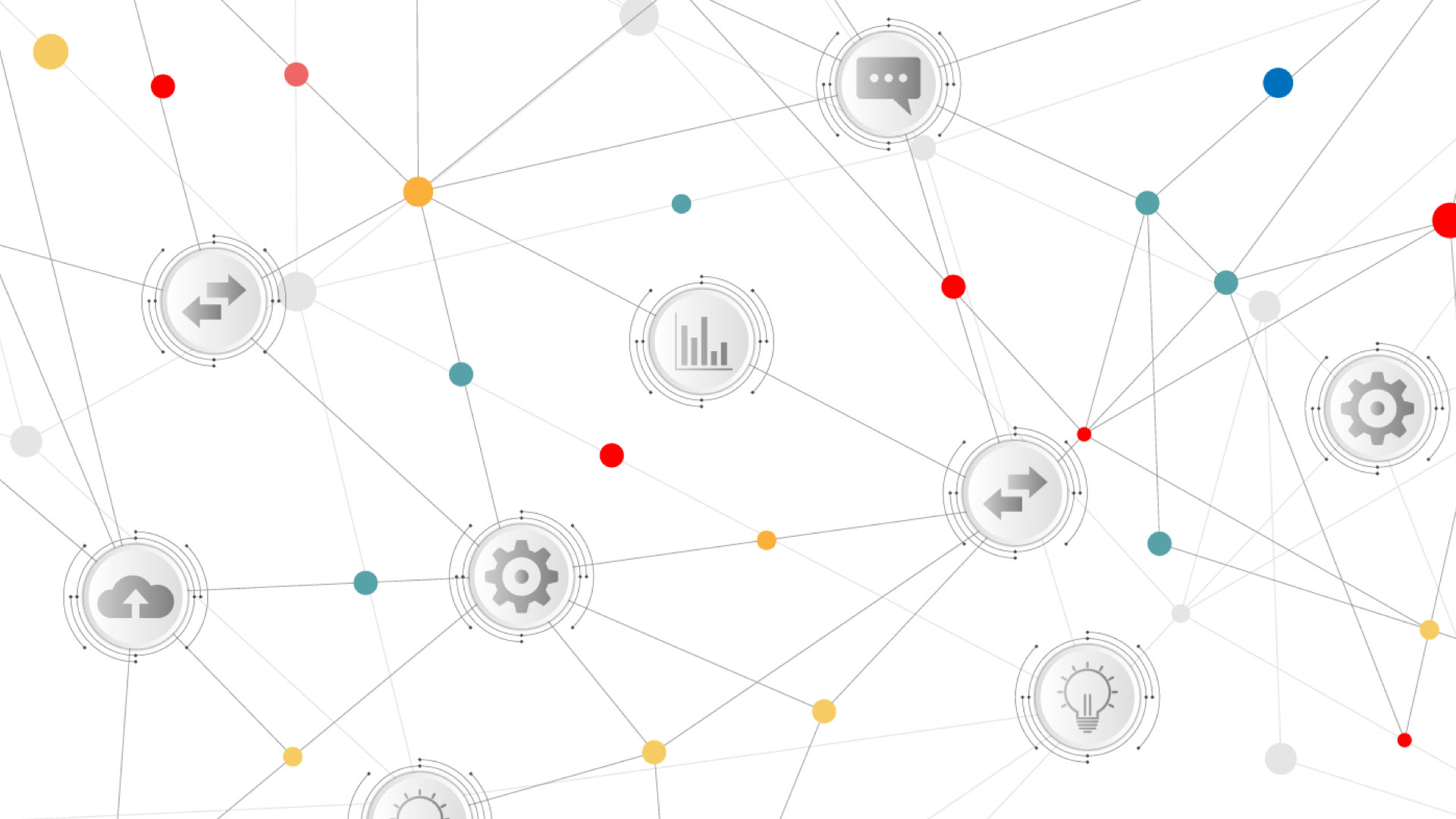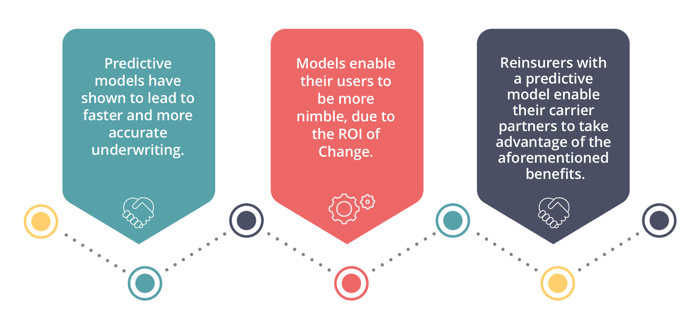Connecting the dots: How predictive models can strengthen the reinsurer / carrier partnership

Is there a link between today’s machine learning (ML)-driven predictive risk models and stronger reinsurer/carrier partnerships? There most certainly is. And it isn’t difficult to find. You just need to connect the dots.
Life insurance applicants come from a variety of channels: direct-to-consumer, advisors, agents and brokers, employers, etc. Whatever the source, however, the process still involves a life insurance carrier that underwrites the risk and, in many cases, a reinsurer that shares that risk over the life of the policy.
Can a piece of technology, namely a predictive model, strengthen the partnership between carrier and reinsurer? We believe so, because while the relationship is based on shared risk, it can also yield shared rewards in the form of faster, more accurate, and nimble underwriting that is driven by data.
For the most part, risk assessment begins with the carrier’s underwriters, who examine the data and make underwriting decisions. That process traditionally involves a set of rules that accounts for multiple data points, plus human judgment that overlays real-world logic on top of those rules.
Recently, however, reinsurers have discovered that adding a third leg to the underwriting stool can yield much more accurate mortality risk assessments. That leg is a predictive risk model.
In our experience, reinsurers are in a unique position to provide predictive models to the carriers with which they partner, in an effort to improve the overall risk assessment. That coordination and more accurate assessment are good for all, including their respective bottom lines.
Model + human + rules
A predictive risk model can be thought of as a highly sophisticated set of rules, built using ML to quickly assess applicant data. A model’s algorithm can simultaneously consider the interactions of hundreds of risk factors and permutations — a task that would be literally mind-boggling for humans to attempt.
Simply put, model + human + rules outperforms human + rules only.
Predictive models can identify combinations and patterns in the data that mere humans and their rule sets can’t come close to matching. With this sophisticated approach, underwriting programs can identify hidden risks (and the hidden healthy) that simpler decision-making processes may miss. Simply put, model + human + rules can outperform human + rules only.
The benefits of improved risk assessment
Better risk selection can lead to higher profitability for reinsurers and carriers alike.
Armed with a risk model’s turbocharged data analytics, carriers and reinsurers can spot opportunities that others miss. This is especially valuable in identifying high- versus low-risk applicants. Because a predictive model can process more risk variables than humans + rules can, it can discover healthy low-risk applicants that other, less data-powered carriers may regard as mid or high risk.
As a result, we’ve seen that predictive models lead to faster underwriting decisions. Applicants can be offered lower premiums, attracting them into a book of business. Current-year revenue can be added to the bottom line, and policyholders can be retained for the term or life of the policy. Long-term payouts will also be lower, resulting in growing margins. Of course, all applicants, carriers and their reinsurer partners are unique, so the ROI of faster and more accurate underwriting varies for each carrier and reinsurer.
The ‘ROI of Change’
In addition to improved risk assessment, the ROI of a predictive model is clearly illustrated when comparing the process of updating a rules engine versus updating a predictive model.
For example, to accommodate new thresholds for the risk level of certain lab values, a typical underwriting system based on a rules engine may require changing dozens of rules. Those changes often have downstream effects on subsequent rules, requiring the carrier to fine-tune, test and closely monitor the outcome of those adjustments. This process can get very time-consuming very quickly.
When we consider a model’s ability to seamlessly translate an infinite number of data adjustments, the ROI of Change can be significant.
In contrast, that same change to a predictive model is accomplished in a single update. A data scientist revises the thresholds and retrains the model — a relatively simple task. The algorithm automatically adapts to the changes of that variable, and the model identifies and makes all required predictive changes throughout the process.
We refer to the time savings associated with updating a predictive model versus a series of rules as the “ROI of Change.” When we consider a model’s ability to seamlessly translate an infinite number of data adjustments, the ROI of Change can be significant.
The value of stronger reinsurer/carrier partnerships
Carriers that are not in a position to develop, integrate or maintain their own predictive models are finding that reinsurers can be a valuable resource in terms of tools and knowledge.
Reinsurers can provide underwriting platforms with one or more built-in predictive risk models, taking advantage of the benefits mentioned above: improved risk assessment and faster, more sophisticated analysis that can encompass hundreds of data points. That’s a powerful value-add that can strengthen the relationship, improve the risk assessment and impact the bottom line for both parties.

Connect the dots, reap the rewards
So let’s recap: Predictive models have been proven to lead to faster and more accurate underwriting.
Models enable their users to be more nimble, due to the ROI of Change.
Reinsurers that integrate a predictive model into their underwriting platform enable their carrier partners to take advantage of the aforementioned benefits.
Is there a link between today’s ML predictive underwriting risk models and stronger carrier and reinsurer partnerships? There certainly is. Just connect the dots. And reap the rewards.
MM202505-301694





